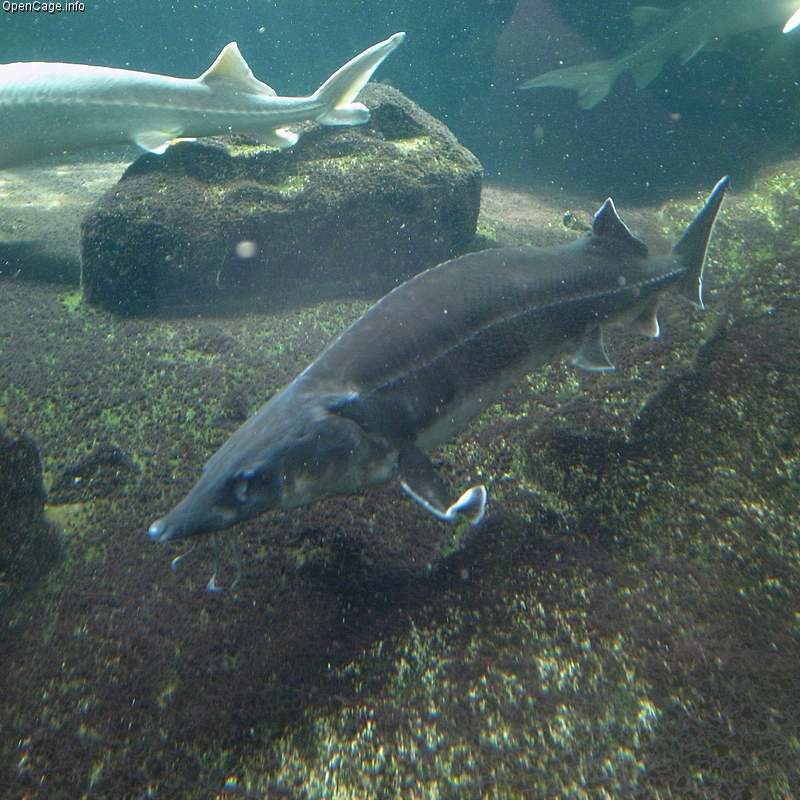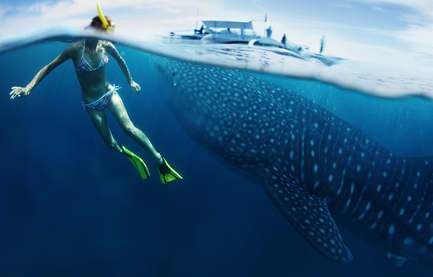
FISH PHOTOGRAPHS: Photos of Huge Fish
Every angler has a tale to tell about the one that got away and dependant on where they were fishing, the sizes can vary drastically. Some will tell you that it was ‘so’ long and must have been at least ‘so’ many pounds, which you almost intuitively know is a total and bare faced exaggeration, but you smile pleasantly.
It is a scenario that has probably gone on ever since man discovered that a piece of string on the end of a stick and a worm could get him a meal. Over the years, as the tales of near misses have been passed down religiously from father to son, the measurements appear to be growing with every new generation.
The odd thing is that although most of these anglers wish their tales were true, the truth is that they have never come close to catching some of the real monster fish that are out there. It takes a special kind of person with, it has to be said, some hardcore fishing gear to get anywhere near to these giants.
If you fancy yourself as the super angler that many people say they are, there are several more than worthy adversaries in the water just waiting for battle to commence and listed below are just a few of the gargantuan monsters that will strain every sinew in your body as you pit your wits and strength against them.
Mekong Giant Catfish
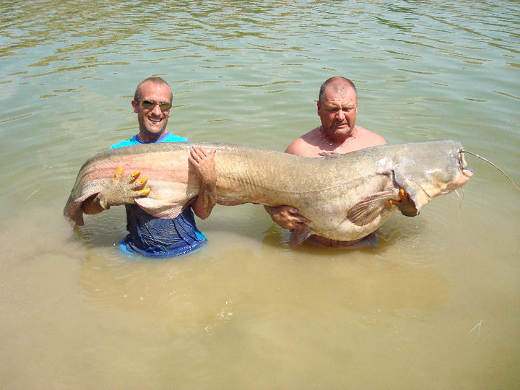
Image: justgofishin.net
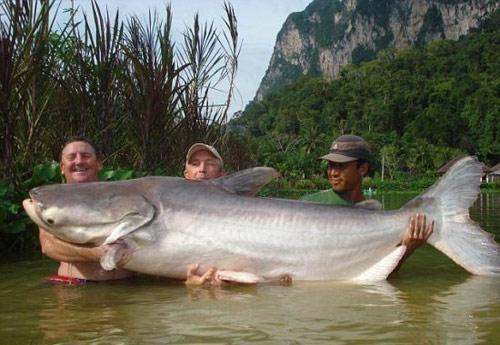
Image: jokeroo
These catfish are the largest scaleless freshwater fish in the world and can be found mainly, as their name suggests, in the murky waters of the Mekong River, around the lower parts of the South East Asian river in places like Thailand and Cambodia.
These monsters, which are normally grey to white in colour, are instantly distinguishable from other catfish as they have almost no barbels, because they shrink with age and no teeth. They feed on plants and algae in the river, but don’t think that makes them placid and easy to catch – these giants won’t go without a fight.
To put it into some sort of perspective, these fish, which grow extremely quickly, have been known to reach lengths of more than 9 feet and tip the scales at well over 600 pounds – in 2005, a female was caught that was over 9 feet long and weighed in at an incredible 646 pounds.
Sturgeon
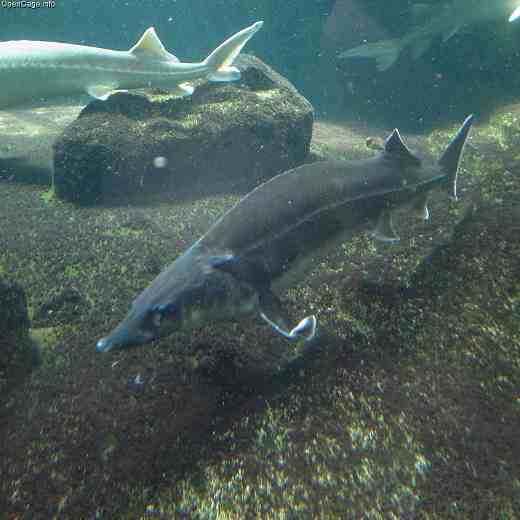
Image: opencage
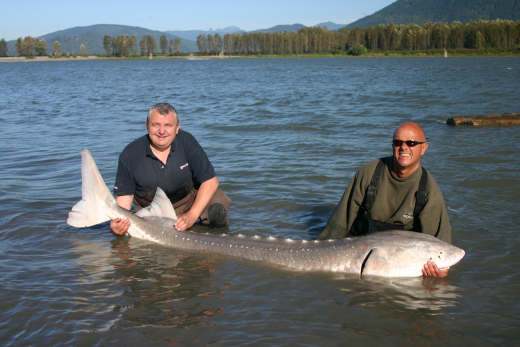
Image: Kenneth Sturman (fotopedia)
One of the oldest families of fish in existence today, sturgeon are more probably known as the source of that most acquired of tastes, caviar. The species, which are harvested for their roe, have therefore become the most valuable pound for pound fish in the world.
As with the catfish, these leviathans have no teeth with which to seize prey, but that doesn’t stop some of the bigger specimens from swallowing large fish – such as a whole salmon – in one go. They have elongated bodies which have a distinct lack of scales, but are partially covered with bony plates and also have four barbels.
These monsters can live for over 100 years, which is plenty of time for them to grow into the giants that we see today. In reality, finding a sturgeon at 6 to 12 feet in length is seen as quite commonplace, especially when you consider that some of the bigger ones easily exceed this and can reach an incredible 18 feet.
Oarfish
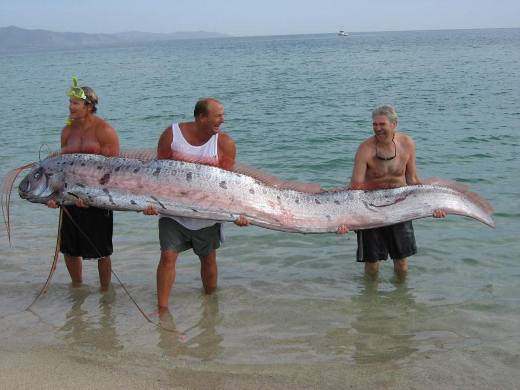
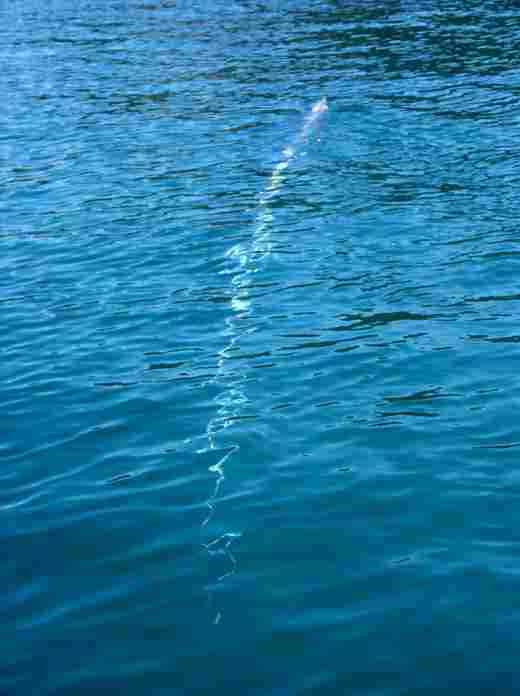
Image: diver.net
When it comes to length, the Oarfish are the real ‘Big Daddy’s’ of the fish world, especially as one specimen was reported to have reached an incredible 56 feet long. Generally they are more likely to be around the 30 feet mark, but even at this size, it’s an awful lot of fish for one person to catch.
Although these fish are very reclusive, they have in recent times been spotted close to the surface in the beautiful clear waters of the Caribbean. Stunning creatures with a very slim, shiny silver body with brightly coloured fins, because they live at depths of around 650 feet, they are very seldom seen.
Scaleless and like the others mentioned so far, with no teeth as such, they are not going to bite should you be lucky enough to catch one of these secretive creatures, but if you did manage to reel one in, despite the fact that they make a good food source for the likes of sharks, they are not so tasty for humans.
Mola Mola
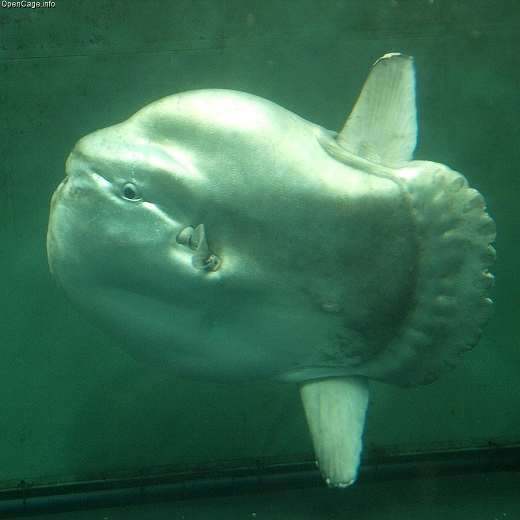
Image: opencage
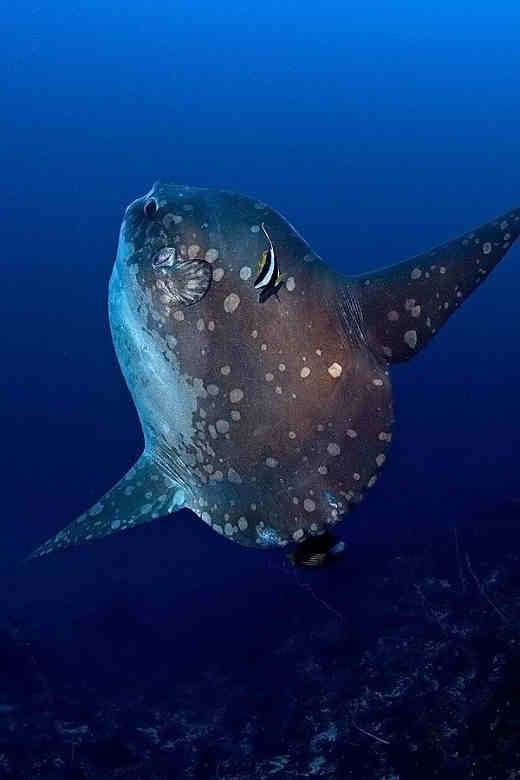
Image: enje (fotopedia)
By far the heaviest fish on this list, as an average adult will quite easily hit the 2,200 pound mark, it’s difficult to imagine the tackle the average fishing fan would need to get a Mola Mola onto their boat – that is, assuming they have a boat big enough.
Also known as the Ocean Sunfish, they can remarkably be just as long as they are wide with their fins extended, but they aren’t the prettiest fish in the ocean – they basically look just like a large fish head with a tail.
Eating a copious amount of jellyfish to maintain their size, in some parts of the world the fish is considered a delicacy, but to most people the sheer sight of them would be more than enough to put them off attempting to even catch them, let alone eat them.
Giant Freshwater Stingray

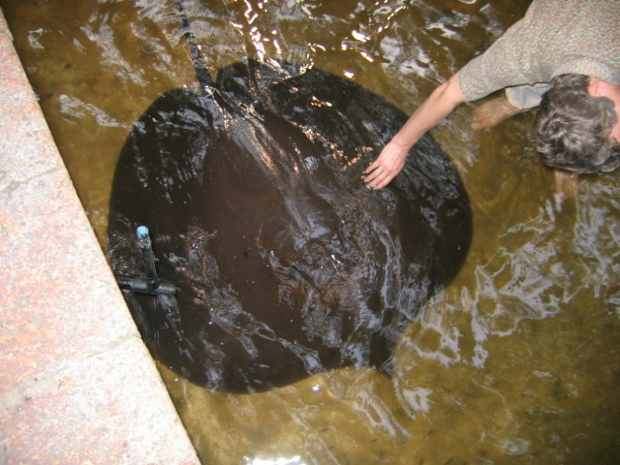
Image: Barry Rogge (Wikipedia)
Said by experts to be the largest freshwater species in the world, living in the likes of Northern Australia and Borneo, Giant Freshwater Stingrays are wide and flat with a long tail and are usually brown or grey in colour.
It is thought that they can grow up to a very impressive 16.5 feet long and tip the scales at somewhere around the 1,300 pound mark, with a recent specimen caught in Cambodia’s Mekong River, a place they seem to thrive, measured at more than 13 feet in length.
If this is the fish that takes your fancy and you would relish the challenge of landing one as your prize, there is one thing that you may like to take note of – they are one of the few giants of the water that have a way of fighting back, as they have a deadly barb on the base of their tails. These barbs, which can be around 15 inches long, are sharp enough to quite easily penetrate human skin and when they do, it leads to the introduction of toxins into the blood stream.







